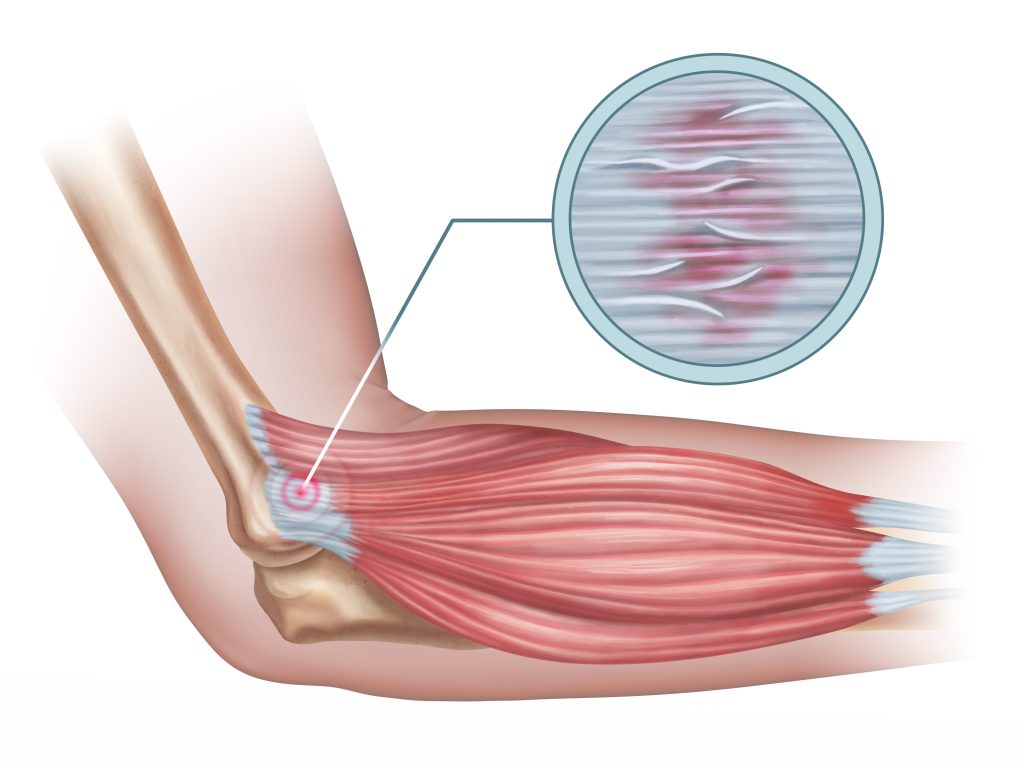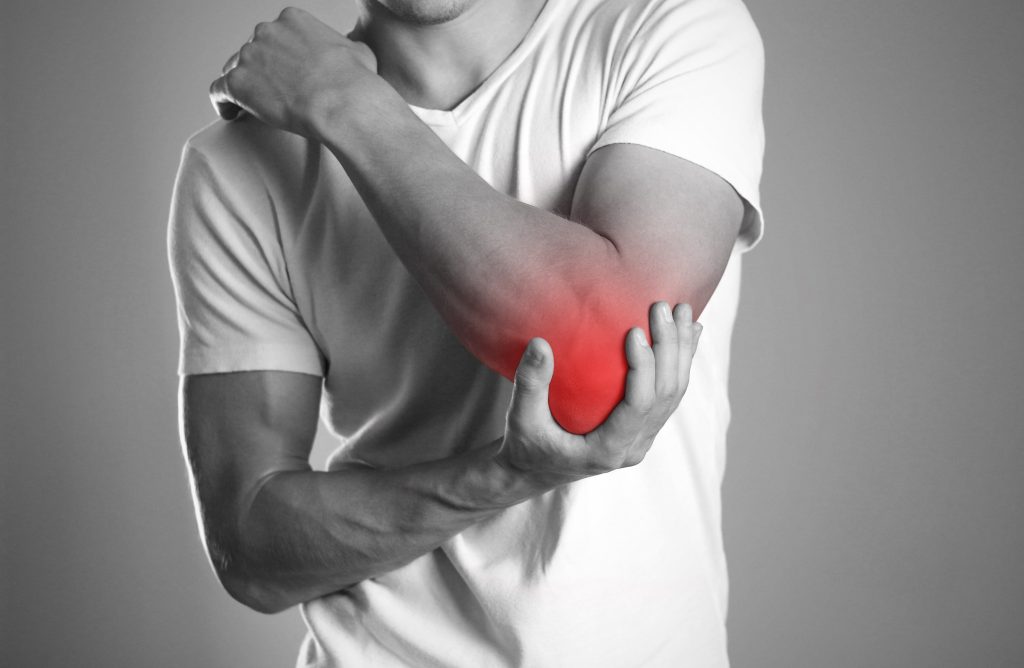Bursitis of the elbow (bursitis olecrani)
Specialist treatment for elbow pain in Vienna
Bursitis of the elbow – medically known as bursitis olecrani is one of the most common causes of painful, sometimes reddened swelling on the back of the elbow. In my orthopaedic practice in Vienna, I regularly encounter this complaint, especially in patients with occupational or sporting strain on the tip of the elbow. The good news is that with the right diagnosis and individually tailored treatment, the symptoms can usually be resolved quickly and sustainably.
What is olecranon bursitis?
If the bursa above the elbow bone becomes inflamed, this is known as olecranon bursitis. This fluid-filled buffer serves to reduce friction between the skin and bone. In the event of mechanical irritation, infection or overloading, it can become inflamed, which leads to typical symptoms
Most symptoms include:
- a visible, often bulging and elastic swelling over the olecranon
- Pain with pressure or movement
- occasionally Redness and overheating
- in infectious cases movement restrictions and fever
The disease can be acute, subacute or chronic. Careful orthopaedic clarification is recommended, especially in the event of recurrent occurrence.

Causes of bursitis of the elbow
The development of olecranon bursitis
The development of olecranon bursitis can have a variety of causes. In addition to accidents or infections, it is mainly repetitive strain that irritates the bursa. There is therefore an increased risk in certain professions and sports.
Typical triggers are
- Mechanical pressure: Frequent support of the elbows on hard surfaces (e.g. when writing, DIY or computer work)
- Traumatic events: Falls or blows to the elbow
- Underlying inflammatory diseases: e.g. rheumatism, gout
- Microtraumas caused by physical exertion: for example, contact sports or strength training
- Infections
It is important to identify the exact cause – because this is the only way to develop a sustainable therapy.

How does olecranon bursitis manifest itself?
Patients usually report a sudden or slowly increasing swelling above the elbow. The skin is often taut, sensitive and occasionally reddened. In the initial phase, the symptoms are often mild, but can worsen within a few days.
Common symptoms are
- Swelling over the olecranon
- Pressure pain and feeling of tension
- Heat transfer on the skin
- Pain on movement when bending or stretching
- Fever or pus formation in case of bacterial inflammation
If there is significant redness, pus formation or fever, a doctor should be consulted immediately to rule out infected bursitis.
Diagnostics in the surgery
In my practice in Vienna, I combine clinical experience with modern imaging to quickly make a reliable diagnosis. The exact assessment of the cause (non-infectious vs. infectious) determines the further course of action.
Our diagnostics process includes
- Clinical examination: Assessment, palpation, movement test
- Ultrasound: for the visualization of effusions or chronic changes
- Puncture: to relieve or analyze the bursal fluid (e.g. detection of bacteria)
- Blood test: for inflammation diagnostics
- if necessary X-ray or MRIif other joint diseases can be ruled out

Treatment of bursitis
The choice of treatment depends on the severity, cause and course of the inflammation. In many cases, conservative treatment is sufficient. Surgical intervention is only rarely necessary.
Conservative therapy
Most acute bursitis responds very well to conservative measures:
- Protection and avoidance of pressure load
- Cooling (3-5 times a day, 10-20 minutes each)
- Taking anti-inflammatory medication (e.g. NSA)
- Puncture for relief and cortisone injection if necessary
- Antibiotics if an infection has been detected

Surgical therapy
If conservative therapies do not bring sufficient improvement or a chronic recurrent or infected bursitis we recommend surgical removal of the bursa (bursectomy).
This usually takes place:
- Outpatient or day clinic
- under regional or general anesthesia
- with short downtime and fast mobilization

Advantages of early therapy
The earlier bursitis is recognized and treated, the better the chances of recovery. Rapid relief leads to:
- Shorter duration of illness
- Avoidance of chronic complaints
- Preservation of joint function
- Avoidance of infections or further complications
My practice in Vienna offers you targeted, effective and customized treatment.
Prognosis & healing process
The course is favorable in most cases:
- With early therapy, a cure is possible in 1-2 weeks possible
- After surgical removal, the recovery time is about 2-3 weeks
- In chronic cases or bacterial infections, healing may take longer
- The decisive factor is individually tailored aftercare (including physiotherapy if necessary) significantly promotes the healing process.
Frequently asked questions (FAQ)
Is bursitis of the elbow dangerous?
Uncomplicated forms are usually harmless. It can become dangerous if a bacterial infection remains untreated.
Do I need an operation?
Surgery is only necessary in chronic or infected cases. Most cases can be treated conservatively.
How long does it take to heal?
Acute cases usually heal in 1-2 weeks. After surgery about 2-3 weeks until full weight-bearing capacity.
Can I continue to work or do sport with bursitis?
Depending on your profession/sport, a break may be advisable. We will advise you individually on load management.
Can bursitis always come back?
With prolonged strain yes. A relapse can be prevented with suitable preventive measures (e.g. padding, workplace adaptation)
Contact & Appointments
Are you suffering from painful swelling in your elbow? Have your symptoms clarified at an early stage and treated professionally. Arrange an appointment now